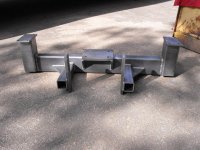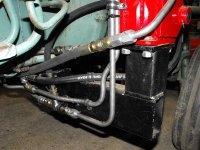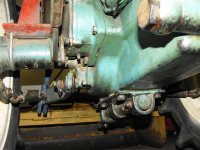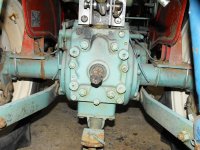so basically what your saying beside repeating yourself is! you have no Compact tractor and never have had the need to improvise to make your tractor perform in a way to work better, One thing you must know is, our Compact tractors are strong built small tractors although can do task well beyond what some people would expect from a tractor tractor this size, However by them being so lightweight can limit us to certain task for the lack of traction, example: just as a race car enthusiast will do to cars to gain faster and better performance we can make improvements to our CUT tractors to allow them to perform better and more efficient and weight added to the rear happens to be necessary for such a lightweight tractor, given one with a FEL means even More weight is needed for the rear, Your argument seems to be that weight added further past the rear wheels connected to the 3-pnt lift has no effect in helping to relieve the load from the front,....................
Well I also read back a thread where a trailer was being discussed over and you chimed in for the sake of argument.....
Let us use a trailer as an example: I have a dual axle trailer estimated 1800 lbs, unloaded.... 500 lbs of which is tongue weight, So! I add 600 lbs of cargo in front portion of the trailer approx 4 ft in front of the axles and 4 ft. rear of the tongue this puts the load about Halfway between the tongue and axles, I approximate half of 600 lbs (300) is on the axle and the other half (300) is on the tongue, this now gives a total tongue weight of 800 lbs, This could be considered cantilever weight to the front of the axles, Correct! OK this is the fun part of figuring, my trailer has no tongue jack and I need to unload the trailer and cargo from the hitch of my truck and have no way to do so, I cannot not physically lift 800lb, But Wallah!
I find a stack of cinder blocks and back up to them and start loading them onto the rear of my trailer in effort to lighten the tongue enough to lift it by hand and to Scotch it up and pull my truck away from it, Question is: how much weight from the Cinder block will be needed to unload the weight from the tongue of the trailer?

or would you be willing to say that this would not work and would not help to lighten the tongue?






